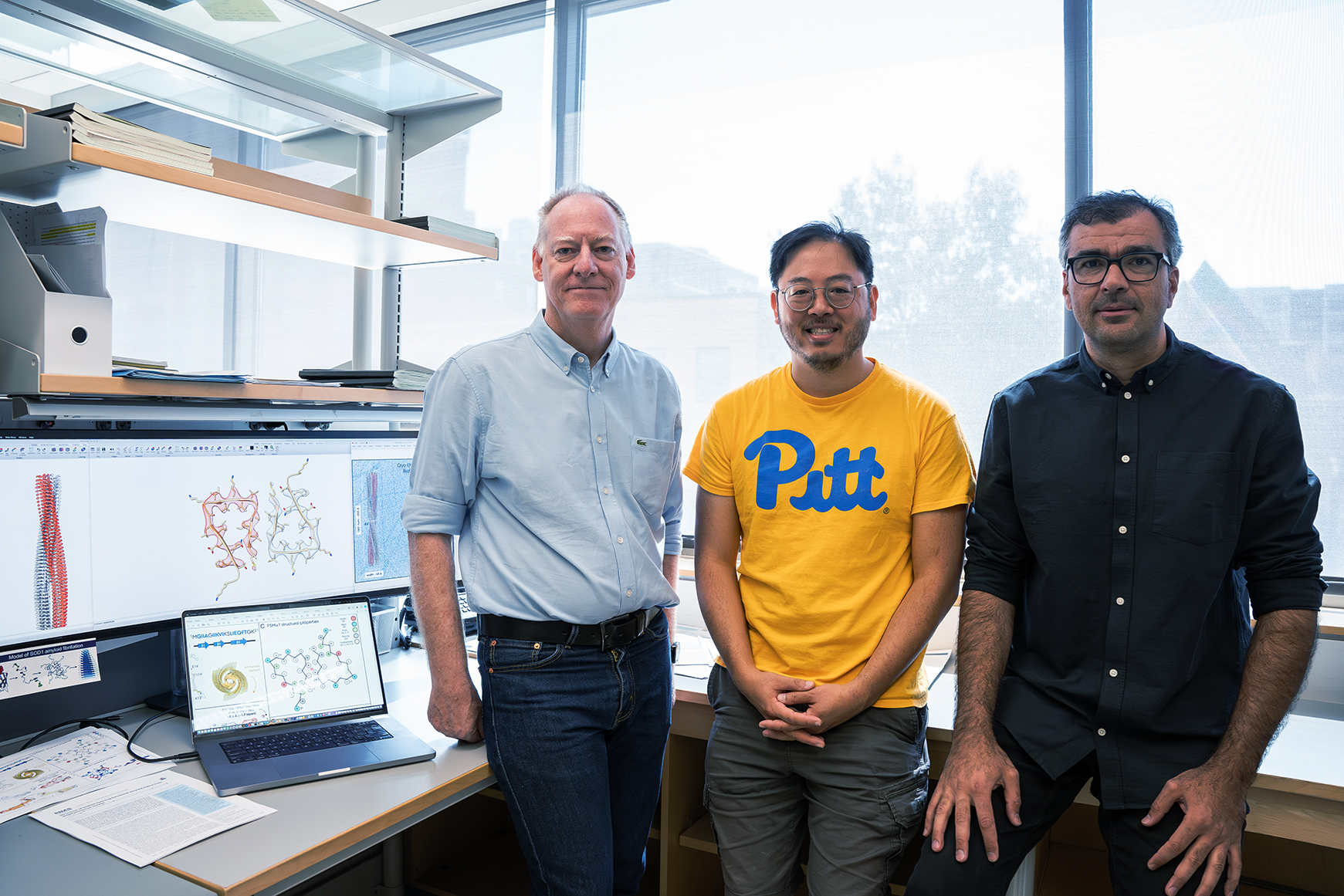
From left to right: James Conway, Chang Byeon, Ümit Akbey
A team of researchers led by Ümit Akbey, assistant professor of structural biology, School of Medicine, was the first to discover the amyloid structure of the PSMα1 from the infectious bacteria Staphylococcus aureus by using cryo-electron microscopy (cryo-EM).
The findings, published Aug. 8 in the journal PNAS, provide insights into how biofilm-forming functional amyloids assemble and can aid in the fight against antimicrobial resistance and bacterial biofilm-related infections, as well as other amyloid-based diseases from other bacterial biofilm infections and pathologic amyloids from neurodegeneration diseases.
This is the first cross-b biofilm-forming functional amyloid structure ever determined and the first amyloid structure determined by using the three-dimensional structure analysis package CryoSPARC. Akbey, working with James Conway, professor of structural biology, and collaborators Maria Andreasen and Thomas Boesen from Aarhus University in Denmark, discovered how PSMα1come together to form long, helical amyloid filament structures.
“Although about 500 amyloid entries are currently deposited in the Electron Microscopy Data Bank, none are high-resolution structures of cross-β biofilm-forming functional amyloids,” Akbey said.
Proteins and polysaccharides make up the skeleton of biofilm, forming a shield around the S. aureus bacteria and preventing even aggressive doses of antibiotics from reaching it. This can lead to stubborn, recurrent chronic infections that are very difficult to treat and can complicate common surgeries, such as knee and hip implants.
This is the first time scientists have gotten such a detailed look at how these specific biofilm-forming amyloid proteins build their macrostructure. Understanding this structure can help in developing new ways to fight biofilm-related bacterial infections and help antimicrobial resistance problem, they hope.
“Now that we have determined the key amyloid structure, we can use it as a guide for developing small molecules and drugs to inhibit amyloid assembly,” which leads to biofilm formation and chronic infections, Akbey said. Methicillin-resistant Staphylococcus aureus, known as MRSA, is a frequent cause of biofilm-associated infections, which the World Health Organization lists as one of the 15 pathogens most threatening to human health.
Akbey hopes that understanding the structure “will be the basis of drug development, which could also help to treat other biofilm infections and amyloid-related diseases like Alzheimer’s, Parkinson’s disease and so on, because the amyloid fibers—the assembled structure of the protein we found—have the same basis,” he said.
